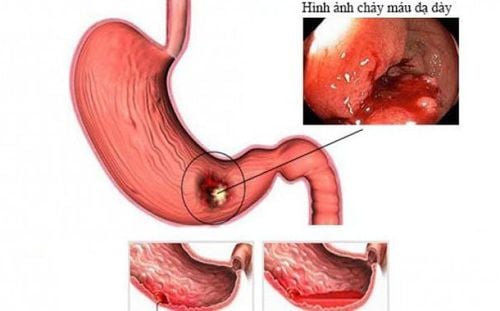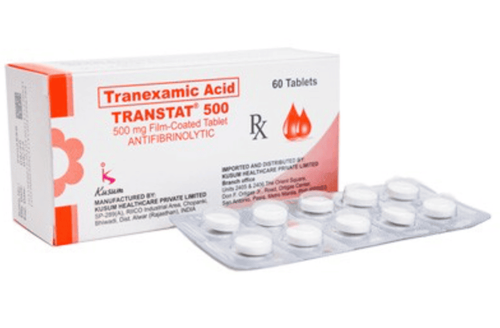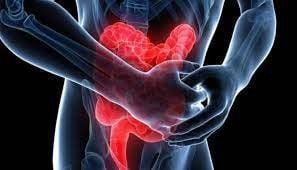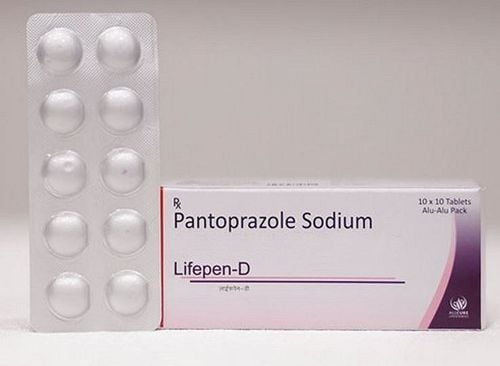This is an automatically translated article.
The article is professionally consulted by Master, Doctor Vu Huu Thang - Emergency Resuscitation Doctor - Emergency Resuscitation Department - Vinmec Ha Long International General Hospital. The doctor has nearly 10 years of experience in Emergency Resuscitation.The Blakemore catheter is an instrument used in hemostasis in the treatment of gastrointestinal bleeding, which is often caused by rupture of esophageal varices.
1. Learn about Blakemore . Catheters
A Blakemore catheter is a catheter that slows or stops bleeding from the esophagus and stomach. This bleeding is usually caused by varicose veins of the stomach or esophagus, which are swollen veins due to blocked blood flow.A Blakemore catheter consists of 3 balloons, each with different functions:
Esophageal balloon: bulges into a small balloon in the esophagus. Gastric balloon: bulges into a small balloon in the stomach. Gastric suction tube: works to remove liquid as well as air from the stomach. For a Blakemore catheterization, a catheter is inserted through the mouth or through the nose to the stomach. After the bleeding has been stopped, the catheter will be removed.

2. In what cases is Blakemore catheter indicated?
The Blakemore catheter is used as an emergency technique to control bleeding from ruptured esophageal veins. When these veins rupture, the bleeding is intense. If left untreated or treated too late, this blood loss can lead to death.Some of the following cases are indicated for Blakemore catheterization to control bleeding:
Patient has gastrointestinal bleeding suspected due to ruptured esophageal vein. In cases where gastrointestinal bleeding due to gastric bleeding or vein rupture has not been confirmed, the placement of a Blakemore catheter is also effective in monitoring gastric bleeding as well as supporting the correct diagnosis of the cause. However, this technique is also contraindicated in some cases:
Venous bleeding has stopped or has shown signs of slowing down. The patient has recently had surgery involving the esophagus or abdominal muscles. Patients with narrowed or obstructed esophagus.

3. Blakemore catheter technique procedure in emergency resuscitation
3.1 Preparatory phase Regarding the performer, the technique requires at least:1 doctor specializing in Resuscitation – emergency. 1 technician to support the tool. About tools - support means:
Blakemore Catheter. Paraffin oil or xylocaine grease in spray pump form. The cord and connector are intended to drain gastric juices and blood into a plastic bag, which is secured to a Blakemore catheter. Laryngoscope, Clar lamp, Magill forceps and speculum. Suction machines and catheters of all kinds. Sterile gauze... For the patient, attention should be paid to:
In the awake and conscious patient, the patient should be placed in a supine or semi-sitting position. In comatose patient: place patient in supine position with head low. Before performing Blakemore catheterization, the patient should be given 0.5 mg of atropine intravenously. 3.2 Blakemore catheter technique procedure – steps First, the doctors will examine the nose to see which position is easy to ventilate, and then numb the nasal canal with spray xylocaine.
Apply paraffin oil to the 2 balls and tip of the Blakemore catheter, move the catheter perpendicular to the patient's face, and insert it straight into the nose.
Once the Blakemore tube has moved to the pharynx:
If the patient is conscious, ask the patient to swallow and then push further in. After each swallow, the patient needs to breathe deeply and evenly. In case the patient is choking or vomiting, the doctor needs to aspirate fluid from the mouth and throat immediately with a large catheter connected to the suction machine. If the patient is comatose: the doctor must intubate before inserting the Blakemore catheter to prevent aspiration in the lungs. Push the catheter inward to about the 3rd line. At this point, the catheter is in the stomach, the doctor will check for gastric juice or not. Inject 20ml of air into the balloon (gastric balloon), slowly pull the catheter out until the balloon is pressed against the cardia. The catheter will be connected to a rubber pulley system (approximately 100 to 150 grams). The doctor will pump about 60-80ml of air into the esophageal balloon to maintain the internal pressure in the range of 40mmHg - 50mgHg. In case blood is still flowing out, up to 100ml of gas can be injected but this limit should not be exceeded. Check the position of the Blakemore tube with an X-ray. The optimal location of the Blakemore catheter is just below the diaphragm and slightly below the myocardium. 3.3 Monitoring of Patient After Blakemore Catheterization Patients after Blakemore Catheterization should be closely monitored and the following precautions should be observed:
Every hour, the patient should perform regular gastric lavage with thawing ice. . This should be done until there are no more blood clots in the water and the wash water is clear. Monitor patient's respiratory parameters because intubation can cause respiratory failure. Esophageal balloons must be regularly removed every 15 minutes every 4 hours to limit the risk of esophageal necrosis. After bleeding stops, the catheter needs to be left in place for another 12 hours, then the esophageal balloon is removed, but the gastric balloon is left in place for the next 12 hours. Next, remove the balloon and leave the catheter in place for about 24 hours.
4. Some Possible Risks With Blakemore Catheter

Blakemore catheterization is a procedure performed in some emergency cases, surgery,... at Vinmec International General Hospital. Accordingly, the process of performing emergency resuscitation at Vinmec is carried out methodically and in accordance with the process standards by a team of highly skilled medical doctors and modern machinery systems. Thanks to that, many patients have been saved from danger and limited the possible complications.
Please dial HOTLINE for more information or register for an appointment HERE. Download MyVinmec app to make appointments faster and to manage your bookings easily.














